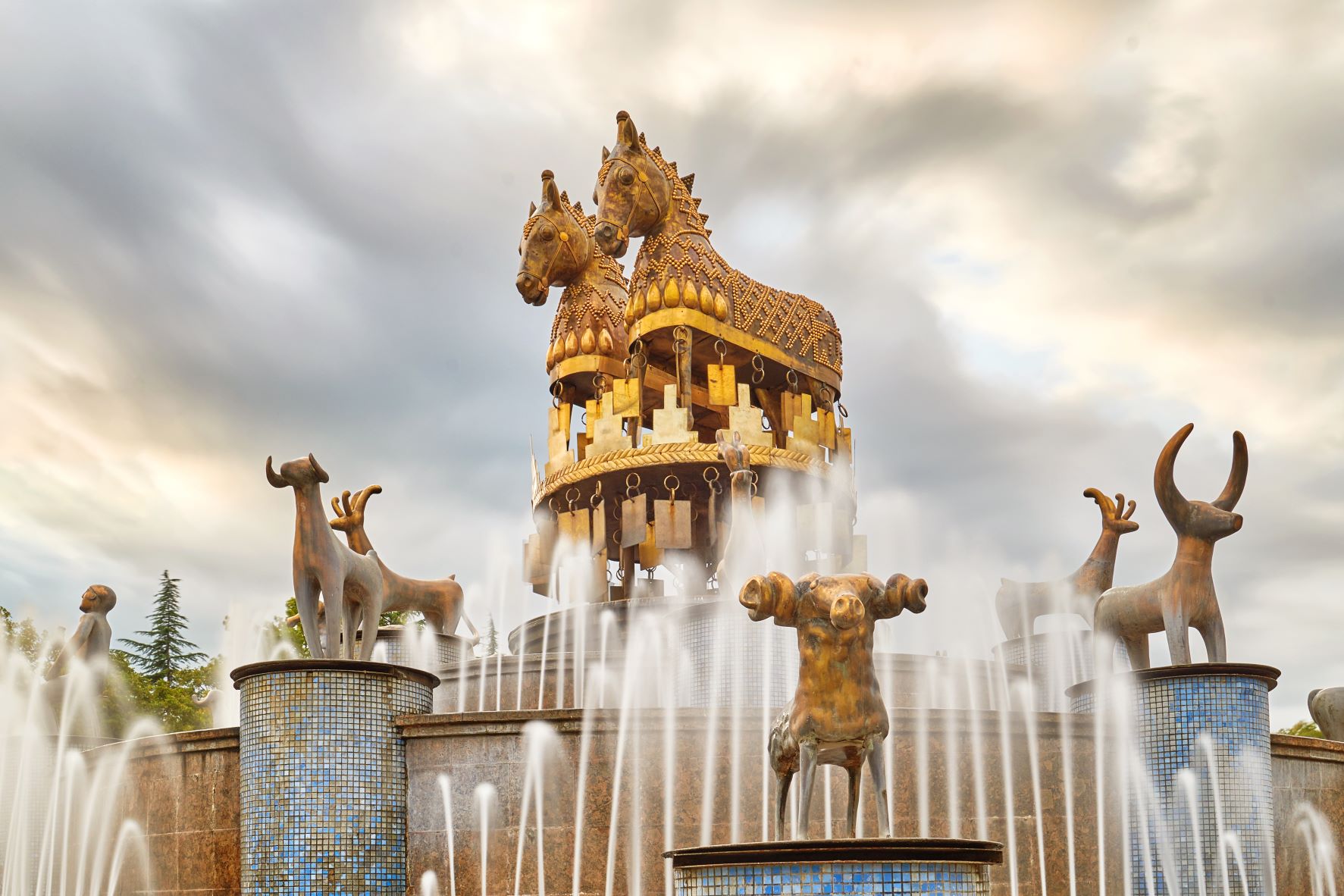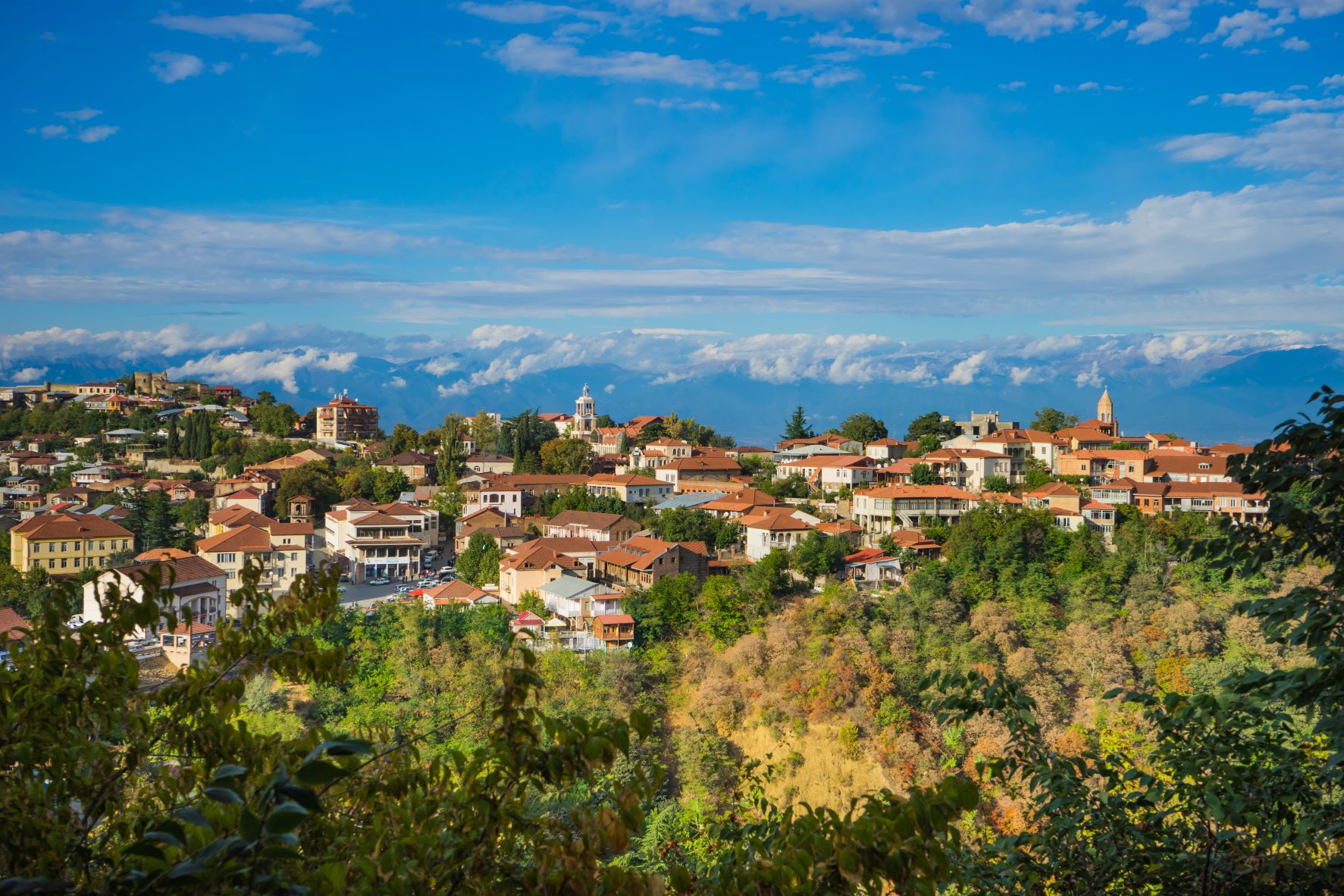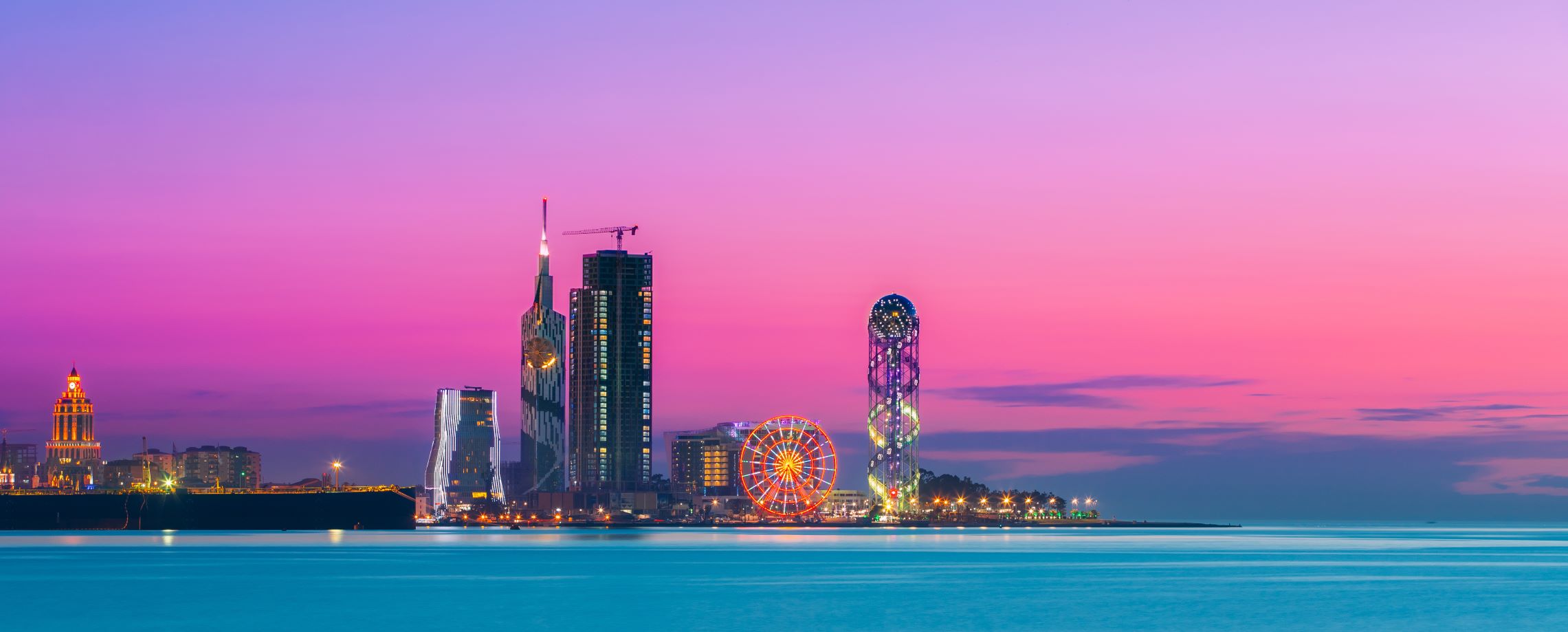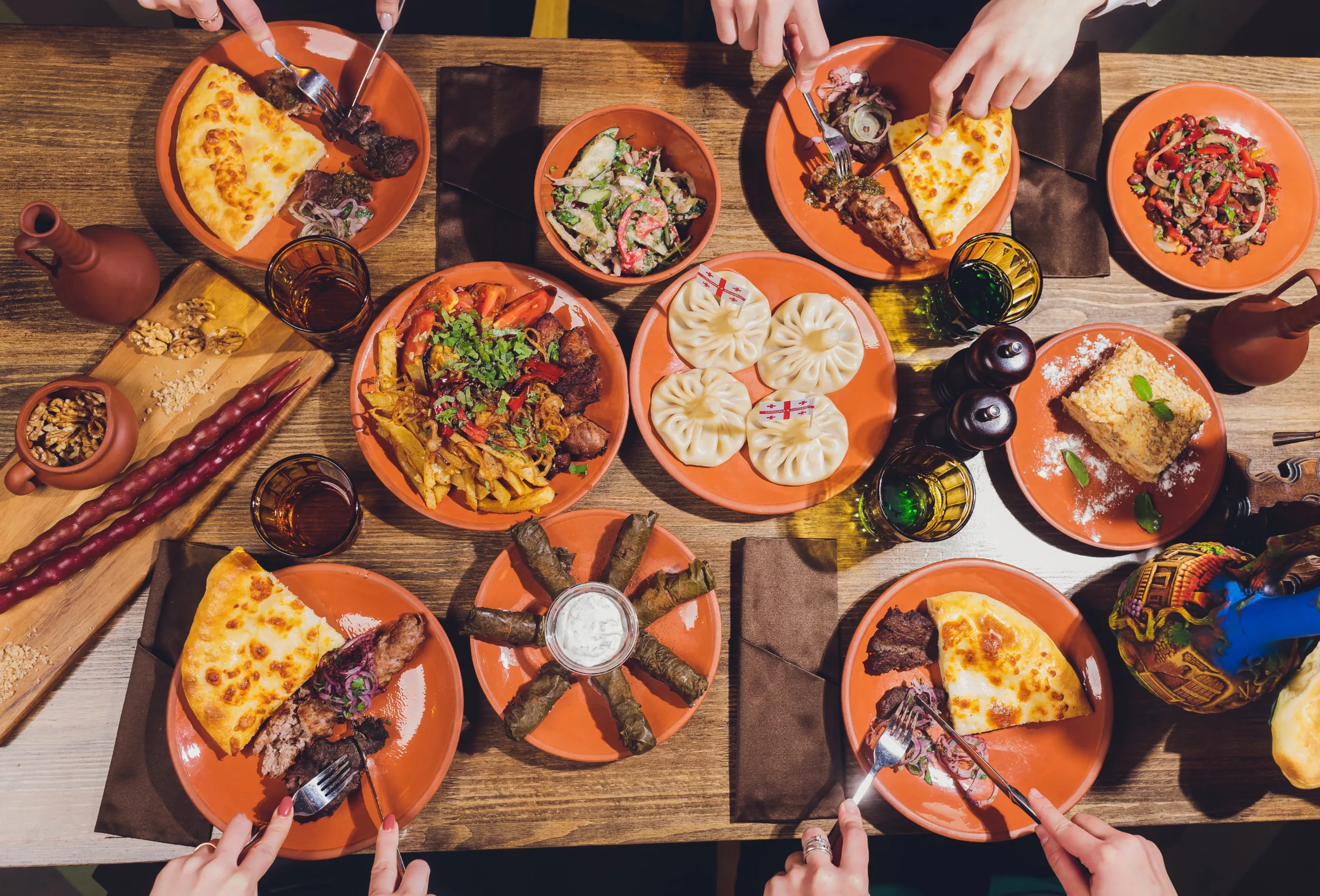1. Why Visit Borjomi?
Borjomi is famous for its mineral water springs and is a well-known balneological resort. People come here for healing treatments or just to enjoy a stroll. Between wellness sessions, there’s plenty to keep you entertained. In this article, you’ll discover:
- what to see in Borjomi, with a list of the top 8 attractions that range from stunning architecture to beautiful forest trails,
- where to eat,
- and how to travel here from Tbilisi.
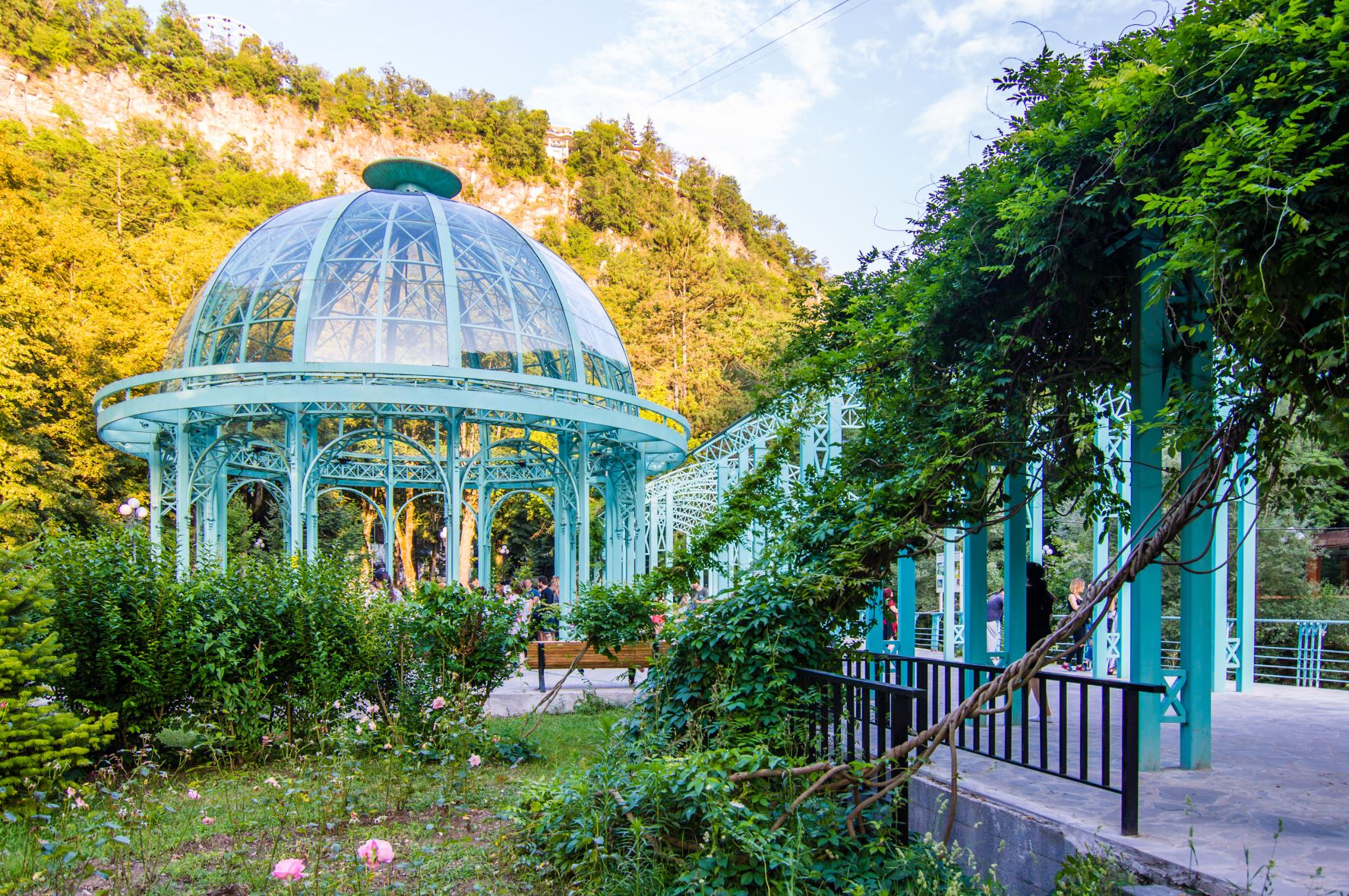
2. Borjomi Central Park
Central Park is located in the widest part of the Borjomi Gorge (200-300 m). It’s a great place to take a walk, no matter the weather. Right by the entrance, there’s a spring where you can get free Borjomi mineral water in containers or plastic cups.
The walking path takes you to a lovely waterfall and a monument to Prometheus. Along the way, you’ll pass various amusement rides and street food stalls (mostly open during the summer). The trail ends at the thermal baths, which are about 40-60 minutes away. After the amusement park, the route continues through a shaded forest park, where you can enjoy the cool shade and the soothing sounds of the river.
Entry to the park costs 2 lari, and there’s a cable car nearby.
From Personal Experience:
If you decide to walk to the thermal baths, be prepared—it can be a bit tiring! Bring some snacks along because the food options are limited, prices can be high, and some kiosks may close during the off-season.
3. Cable Car
⏰ 10:00-20:00, 15 lari one way
The cable car takes you up to the upper part of the park where there’s a Ferris wheel. From here, you can enjoy breathtaking views of Borjomi Gorge and the town below. The gondolas can get crowded, so be ready to share space with fellow tourists eager for window seats to snap photos. Sometimes you might have to wait in line since it can get busy.
From Personal Experience:
You can ride up to the top station of the cable car, enjoy a spin on the Ferris wheel, and then walk back down to the park. This way, you won’t have to pay for park entry or your return trip. Just follow the path down; it will lead you right to the mineral water spring. If you’re unsure where to go, ask a local for directions on where to leave the paved road.
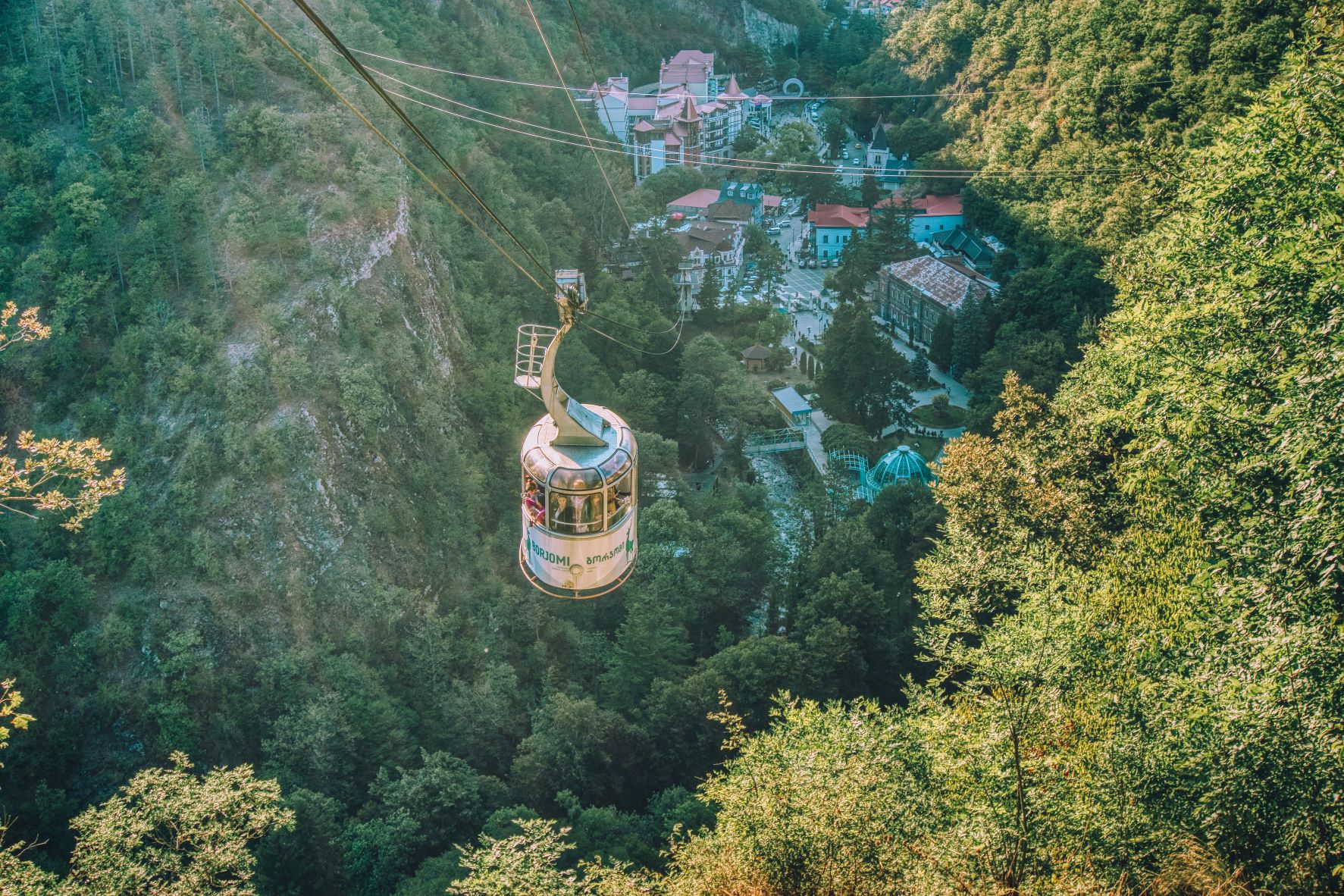
4. Borjomi Museum of Local Lore
⏰ 10:00-19:00, entry 5 lari
The museum is located in what used to be an office for the Romanov family. On the first floor, you’ll find everyday items and weapons from the Stone and Bronze Ages. The second floor features photos and an impressive collection of personal belongings from the Romanovs, including mineral water bottles and labels. The third floor showcases taxidermy animals and examples of local flora found in Borjomi Gorge.
From Personal Experience:
Plan to spend about an hour exploring all the exhibits. It’s worth hiring a guide—they can make your visit more interesting by sharing stories about the resort’s history and notable families who vacationed here.
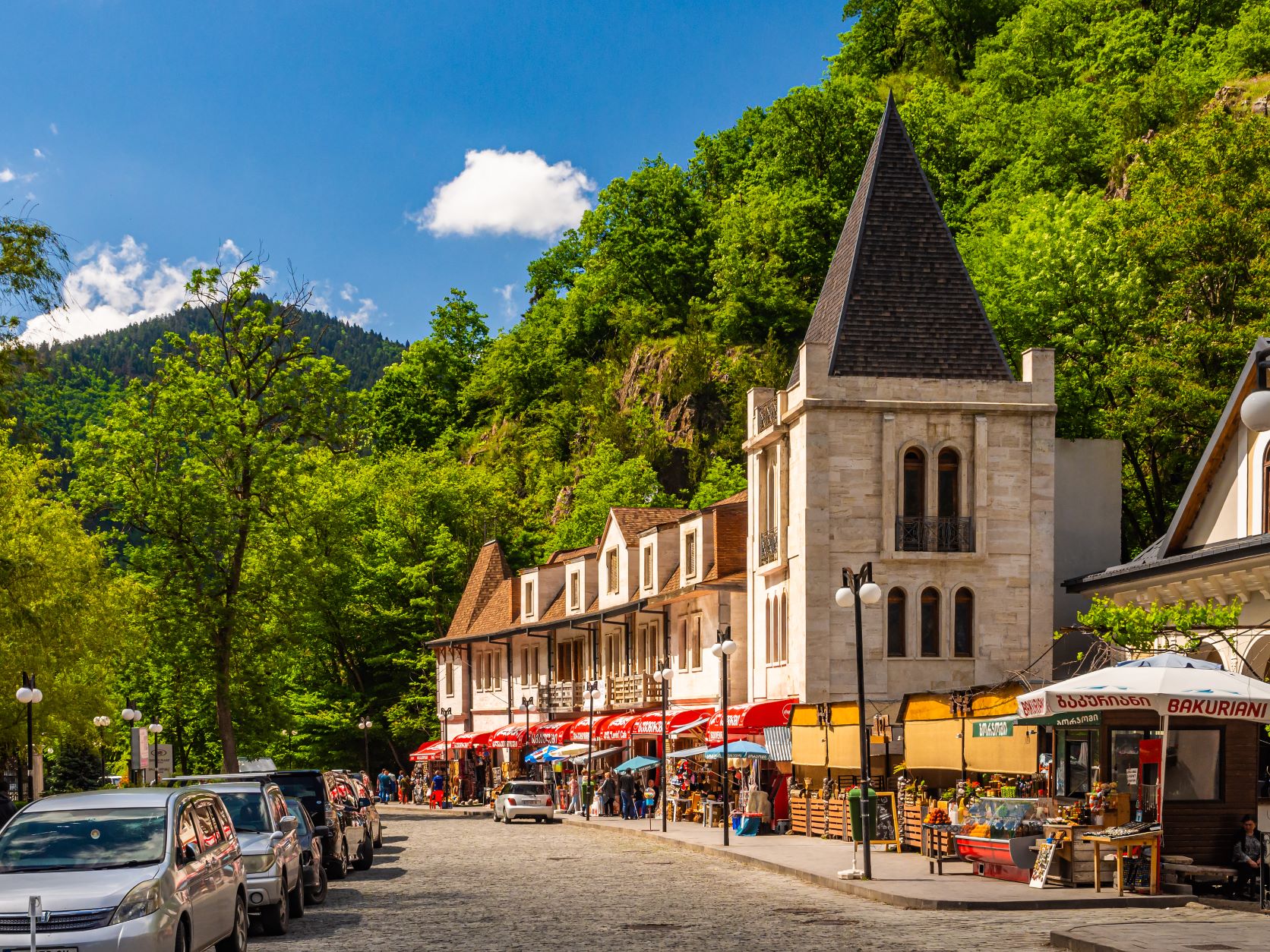
5. St. Seraphim of Sarov Church
Pilgrims and believers from Georgia and beyond visit St. Seraphim’s Monastery at the top of a mountain. According to legend, St. Seraphim prayed for a thousand days and nights on a large stone near the church, which is said to have healing powers.
To reach the church, head towards the thermal baths and continue along a scenic forest path that leads uphill until you see a sign with an icon of St. Seraphim. Near the church, there’s also a wooden hut that resembles St. Seraphim’s dwelling.
6. Gogia and Petre Fortresses
The Gogia and Petre fortresses feature unique quadrilateral stone towers that date back to the 10th to 14th centuries, a time when such structures were common in feudal architecture. While these ancient buildings are in poor condition now, they still provide fantastic views of Borjomi and the surrounding area. The fortresses are connected and serve a shared purpose: to protect the gorge from enemies and signal each other in case of danger. You can reach both fortresses on foot.
7. Green Monastery
Tucked away in a forested valley below Borjomi, the Green Monastery is a serene medieval site that dates back to the 9th century. A river flows nearby, where you can find red stones that locals believe have healing powers—legend says their color represents the blood of monks.
The monastery is about a 15-20 minute drive from Borjomi, but you can also hike here at a leisurely pace to enjoy the soothing sounds of the river, the songs of birds, and the fresh forest air.
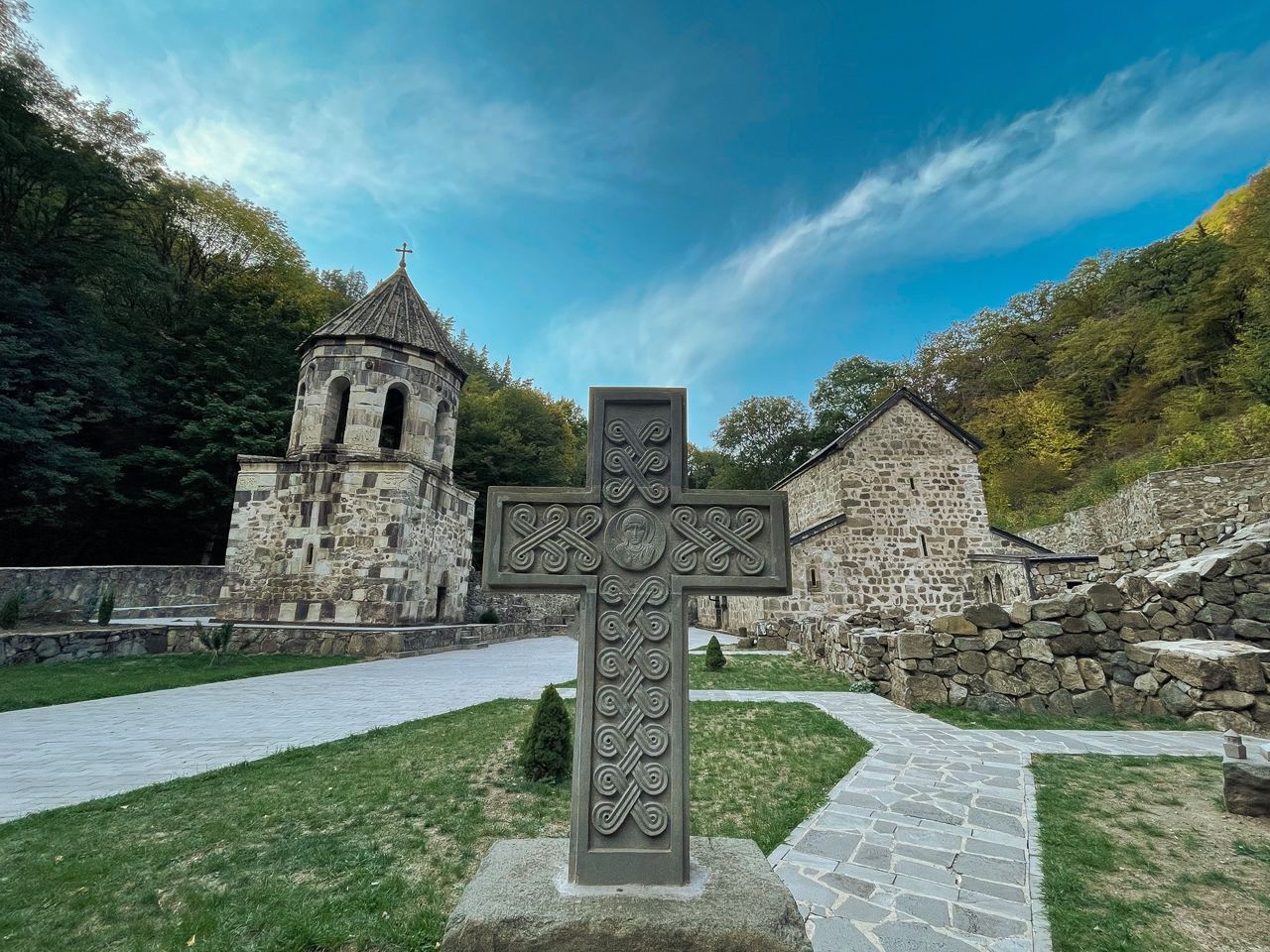
8. Thermal Sulfur Pools
⏰ Daily from 07:00 to 20:00, 5 lari per person
The thermal sulfur pools are the final stop on a walking trail through Borjomi Park. You can get there by following a pleasant path along the river, which takes about an hour.
The water temperature in the baths ranges from 32 to 38 °C and is known for its pain-relieving properties, making it great for your skin and beneficial for your cardiovascular and nervous systems.
The water varies slightly in temperature; the warmest is in the semicircular pool closest to the well, while the largest and deepest pool is rectangular. There’s also a small pool for kids. Visitors can use changing rooms and showers, and there’s a café-bar on-site.
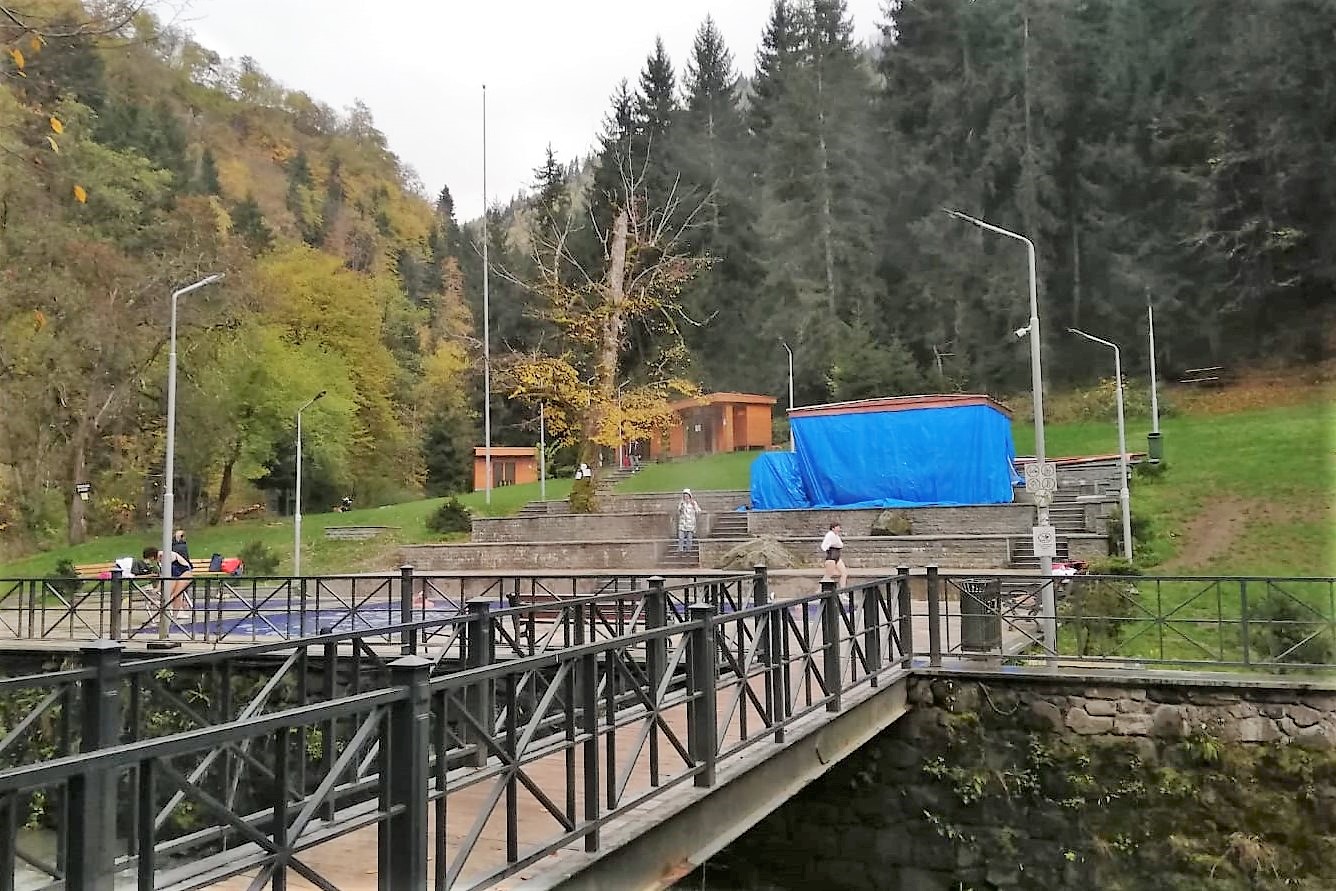
9. Borjomi-Kharagauli National Park
Borjomi-Kharagauli National Park is incredibly beautiful and expansive, covering parts of three regions: Imereti, Samtskhe-Javakheti, and Shida Kartli. The Borjomi Information Center is located at 23 Meskhati Street in a modern building where you can learn about available trails, services, and prices. There are 12 well-marked trails you can explore for one day or several (though not all are accessible in winter).
You can choose from hiking, horseback riding, or biking tours; during winter (December to February), snowshoe hiking is also an option. Some highlights of the park include:
- Easy-to-moderate trails (no steep climbs)
- Stunning mountain views (you can see Borjomi and the gorge from above)
- Beautiful forests
- Fresh mountain air
- Comfortable resting areas with amenities
- Clear signage throughout
Interestingly, this is one of the few places in Georgia where tourist shelters come equipped with stoves for heating during winter, making it suitable for year-round visits.
Before hitting any trail, be sure to register at the information center for safety purposes. You can also rent camping gear there: tents (10 lari), sleeping bags (5 lari), mats (3 lari), and horses (50 lari per day).
Information Center Hours:
Monday to Friday: 09:00 — 18:00
Saturday and Sunday: 09:00 — 16:00
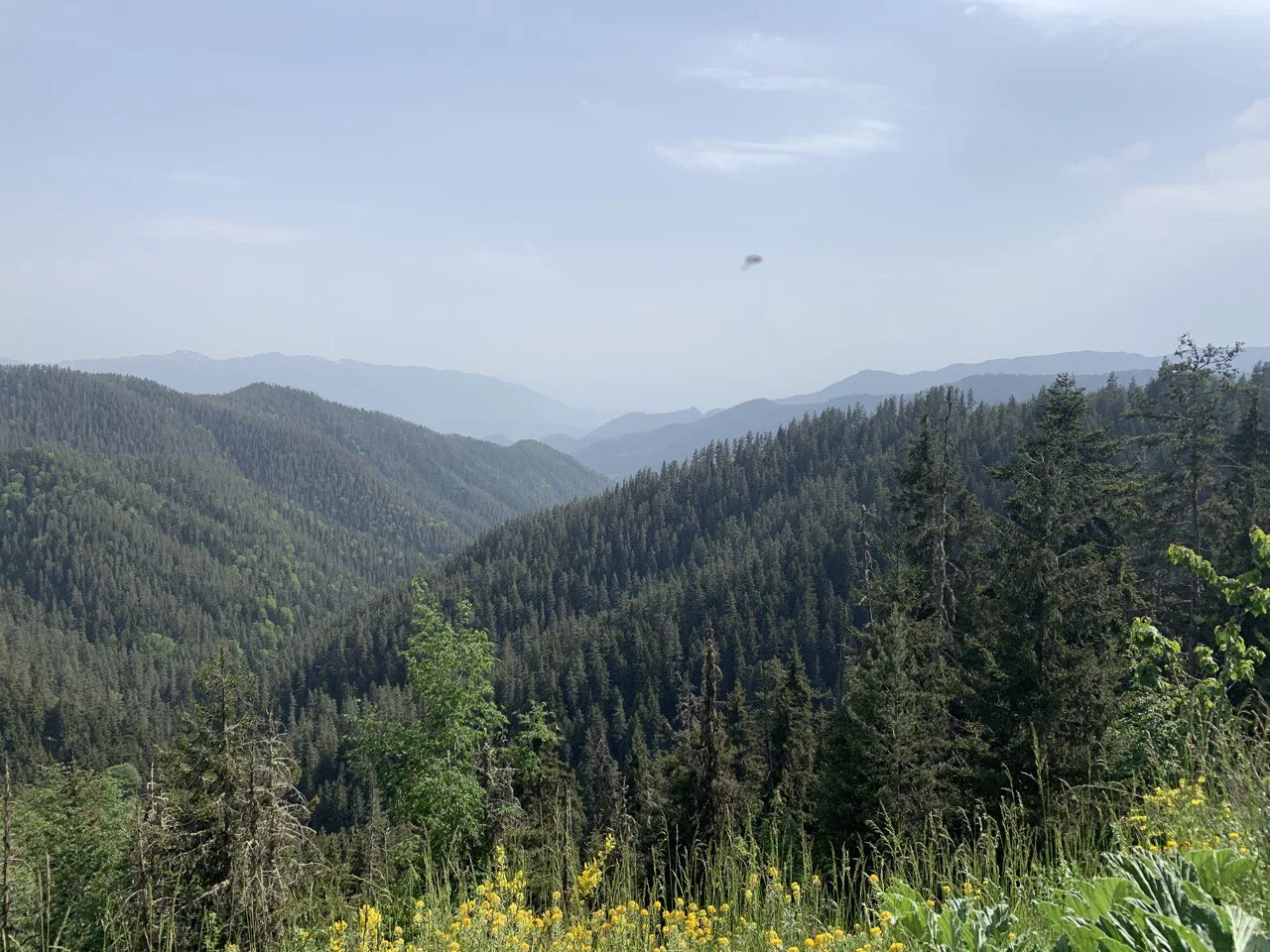
10. Where to Eat in Borjomi: The Top 3 Restaurants According to Local GoTrip Drivers
🍴 Underwood
This charming restaurant, located in the hotel of the same name, offers a wide selection of traditional Georgian dishes. Guests rave about the delicious homemade wine, high-quality ingredients, and cozy atmosphere. Situated along the river, the hotel boasts a beautiful setting that keeps many tourists coming back for more.
🍴 My House
Another great spot for Georgian cuisine, My House features a pleasant interior design. The menu also includes European and vegan options. Visitors appreciate that it’s a nice place to enjoy dessert and coffee as well. One downside is the slower service, so it’s best not to rush your visit.
🍴 Pesvebi
The name of this restaurant translates to “Roots.” It’s a vibrant place filled with atmospheric music, traditional costumes, and animal skins adorning the walls. Diners describe it as authentic and praise its extensive menu of national dishes like khachapuri and shashlik. The flavors are reminiscent of home-cooked meals, making it a must-visit for anyone looking to experience true Georgian hospitality.
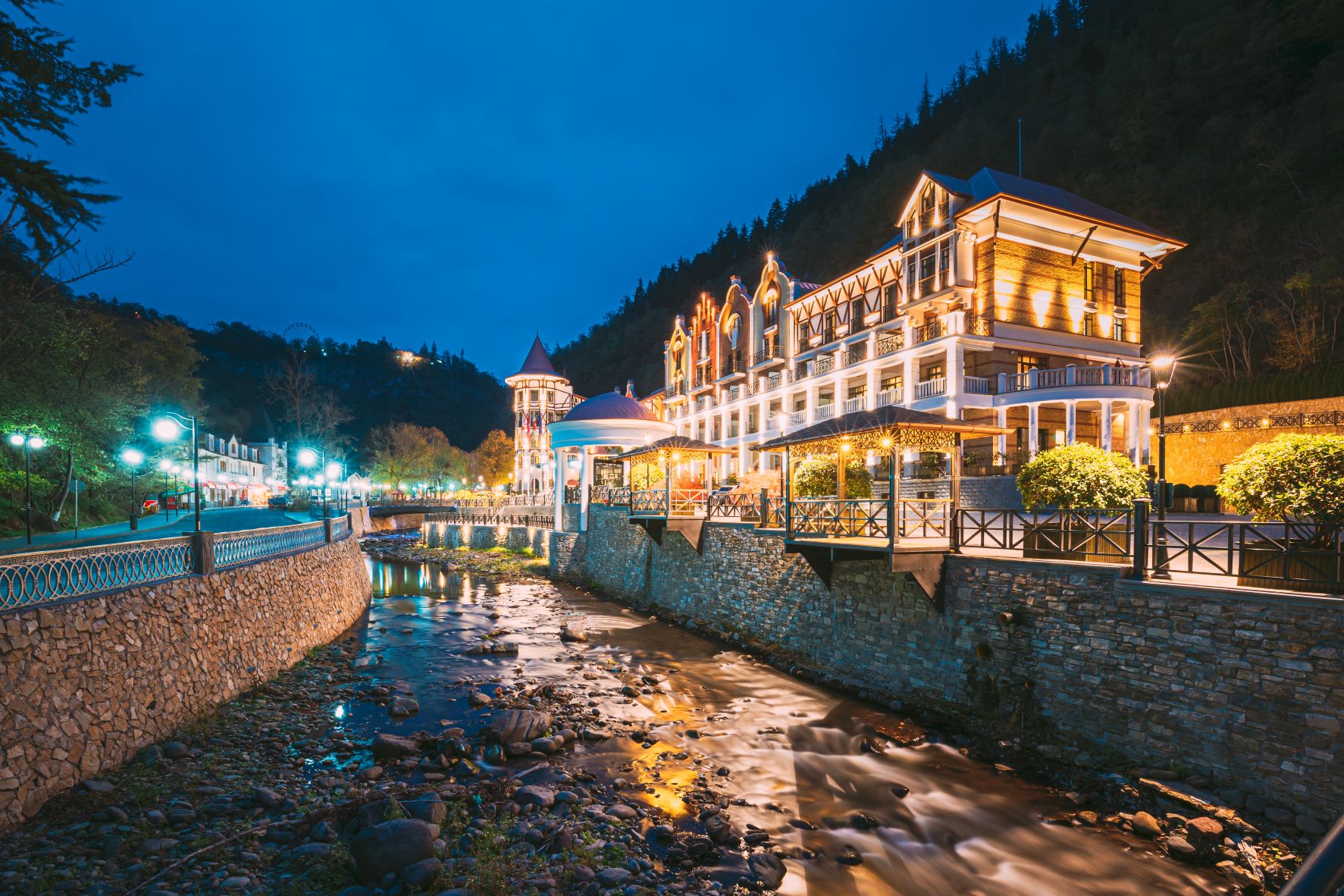
11. How to Get to Borjomi from Tbilisi
Distance from Tbilisi: 161 km
Travel Time: 2.5 hours
There are for ways to reach Borjomi:
Minibus (Marshrutka)
Minibuses leave every hour from Didube Metro Station between 10 AM and 7 PM. The trip takes approximately 2.5 hours and costs 15 lari.
Taxi
Taxi fares start at around 120 lari (about $45). Keep in mind that some travelers find Georgian taxi drivers’ driving styles a bit intense, and return fares may be negotiated at a higher price than what you’d find on an app.
Car Rental
Prices start at $40 (approximately 110 lari) per day, and you may need to provide a deposit. Expect to spend around $20 on fuel for a one-way trip, depending on engine type and current prices in 2024. If you’re not used to driving in mountainous areas, you might find some sections of the road challenging.
Private Transfer via GoTrip
Starting at 198 lari (about $73) for the car, you can book a private transfer with an experienced and trained local driver who knows the roads and attractions well, and drives safely.
Along the way, you can request stops at grocery stores, souvenir shops, or scenic spots for photos. It’s totally free of charge. If you’d like, a driver can also take you to nearby locations like the Green Monastery. Moreover, there are no extra charges for waiting or returning to Tbilisi on the same day.
Borjomi is a small town, but there’s plenty to keep you busy, especially if you enjoy fresh air and outdoor activities. The climate is mild, making it comfortable to walk around and soak in the beautiful natural scenery while exploring interesting sites and rejuvenating your spirit.
